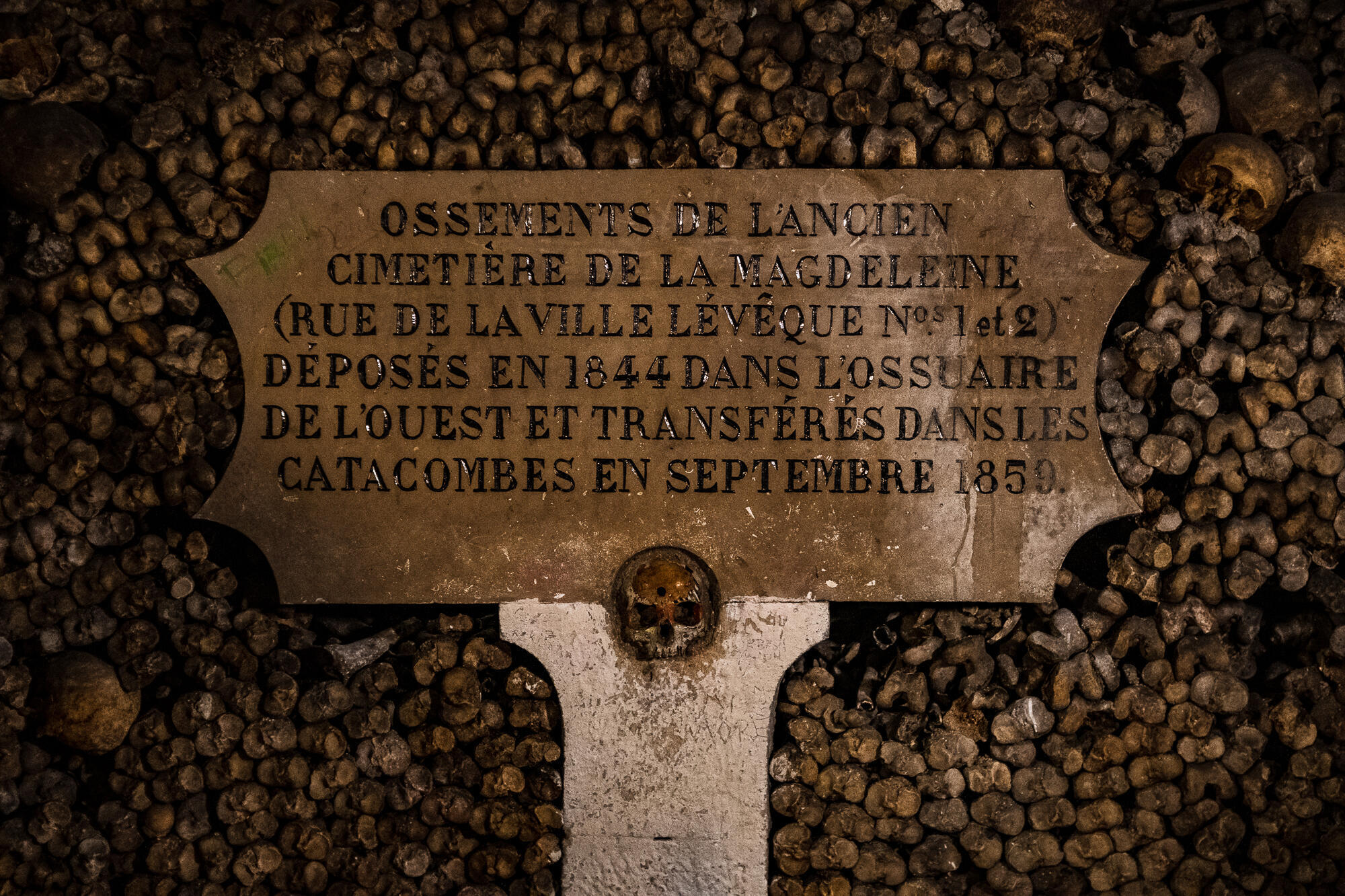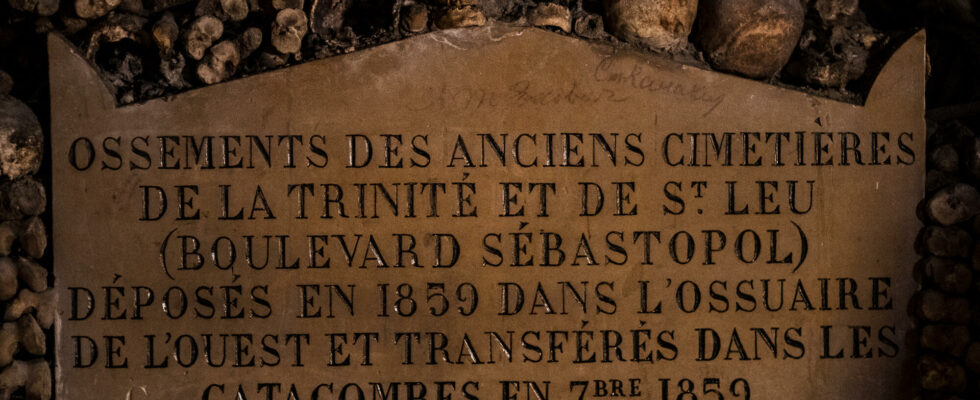Families who have been settled in Paris for a long time all have an ascendancy there. However, the catacombs occupy only a tiny part of the immense network of underground quarries in the French capital and are barely more than two centuries old.
5 min
On May 30, 1780, rue de la Lingerie, in the heart of Parisin the current district of Les Halles, a man named Gravelot filed a complaint. The cellars of his house were invaded by a pestilential odor, making access difficult. The reason for this was the immediate vicinity of the cemetery of the Innocents, where a new mass grave had just been opened. His wife had fallen ill. The authorities finally reacted. The oft-mentioned fear of a major epidemic risk became an emergency.
The largest cemetery in Paris, which is said to have housed two million bodies – the equivalent of the population of Paris today – and in some places saw up to 1,500 dead laid on top of each other – was officially closed. This was not enough, especially since in 1785 it was planned to set up a fruit and vegetable market there. The place had become a veritable 2.5-metre-high tumulus.
A health emergency : emptying the cemeteries in the center of Paris
Charles-Axel Guillaumot had been occupying the newly created position of inspector general of quarries since 1777 and he had an idea: to transfer the dry bodies, in other words the bones, to the place called Tombe-Issoire, in the current 14th arrondissement, not because of its predestined name, but because it housed old limestone quarries. These were immediately renamed catacombs, in reference to the necropolises of Roman antiquity. The transfer began in 1786, accompanied by religious processions that accompanied the remains on their Parisian journey.
The great move continued between 1787 and 1814 and now extended to all the cemeteries in the city centre, which presented the same problems of insalubrity. During the revolutionthe catacombs also served as mass graves for the victims of the violence that shook Paris at the time. Under the First Empire, the ossuary was decorated and briefly opened to the public. It was mainly partitioned off from the rest of the quarries – it only occupied 0.5% of this underground complex. Other bones still arrived in the mid-19th century, some exhumed during Haussmann’s major works. The last known transfer took place in 1933.
Read alsoIn the catacombs
There is only one named tomb in the catacombs, but among the remains of the six million bodies that have been gathered there are those of Rabelais, Montesquieu and Charles Perrault, Fouquet, Colbert and Mansart, Racine and Pascal, Robespierre and Danton, and Marat and Charlotte Corday, united for Eternity. It is now the largest ossuary in the world. With 600,000 visitors, it is also in 2023 the fifth most visited place of the twelve museums and sites grouped together in the public establishment Paris Musées. The contingent of visitors, limited to 200 people per group, limits growth and requires registration in advance during peak periods.

Official visitors and “cataphiles” »
The proposed tour only includes part of the catacombs. The rest of the ossuary and the immense maze of more than 300 kilometers of quarries under Paris are closed to visitors, which does not prevent enthusiasts, the “cataphiles”, from venturing there alone or in groups. They engage in a game of cat and mouse with the fifty police officers of the Intervention and Protection Group – nicknamed the “cataflics” – in the event of a repeat offence. Newcomers are likely to leave with a fine and, in the event of a repeat offence, with a summons to the police court.
This exploration remains a dangerous game in any case, due to the risks of collapse, the lack of a network and the air which can be lacking in places. In fact, fatal accidents are very rare. The first known disappearance is that of a certain Philibert Aspert, whom tradition describes as the doorman of the Abbey of Val-de-Grâce. He went down there in 1793 for an undetermined reason and his body was found eleven years later. He was buried on the site, away from the ossuary, with a personal tomb honored by the “cataphiles”, who celebrate him on November 3, the day of his disappearance, as a sort of patron saint.
In 2016, a 45-year-old man suffered a cardiac arrest at an impromptu party. In March 2024, another 19-year-old fell several meters after slipping from a ladder. He escaped with both ankles broken and a serious head trauma. Two years earlier, a resident of the 14th arrondissement felt the floor of his cellar give way under his feet. He was dragged into an 8-meter fall. Fortunately, he was only slightly injured.
The official website of the Paris Catacombs
Our selection on the subject
Read about the catacombs:
- Alain Clément and Gilles Thomas, Atlas of Underground Paris, The Dark Side of the City of LightsParigramme, 2016.
- Gilles Thomas, Catacombs, history of underground Paris. The Passage, 2015.
- Elie Berthet, The Catacombs of ParisParis, Bureaux du Siècle, 1856 (read on Gallica).
To listen to on the history of Paris:


